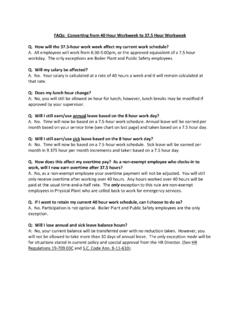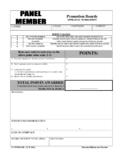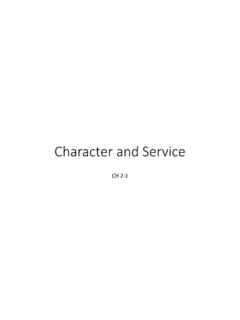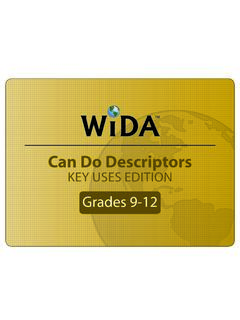Transcription of Blue Book - The Citadel
1 1 blue book 24 July 2020 version 2 While Discipline and Freedom seem like they sit on opposite sides of the spectrum, they are actually very connected. Freedom is what everyone wants to be able to act and live with freedom. But the only way to get to a place of freedom is through discipline. If you want financial freedom, you have to have financial discipline. If you want more free time, you have to follow a more disciplined time management system. You also have to have the discipline to say No to things that eat up your time with no payback things like random YouTube videos, click-bait on the internet, and even events that you agree to attend when you know you won't want to be there. Discipline equals freedom applies to every aspect of life: if you want more freedom, get more discipline.
2 Jocko Willink TABLE OF CONTENTS Introduction Chapter 1 Discipline that Facilitates Organizational Culture and Climate Chapter 2 Discipline that Facilitates Individual Development Chapter 3 Discipline that Facilitates Leader Development Chapter 4 The Administration of the Discipline System Annex A Consolidated Table of Merits Annex B Consolidated Table of Punishments Annex C Glossary INTRODUCTION One commonly accepted dictionary definition of discipline has three The first is control gained by enforcing obedience or order. As part of The Citadel Experience, discipline in this context relates to a cadet s development as a leader. The second is orderly or prescribed conduct or pattern of behavior. As part of The Citadel Experience, discipline in this context relates to the organizational culture and climate of The Citadel .
3 The third is self-control. As part of The Citadel Experience, discipline in this context relates to a cadet s development as an individual. Because discipline at The Citadel embraces all three of these contexts, the blue book is organized in to chapters about organizational culture and climate, individual development, and leader development. Discipline at The Citadel also includes both standards-based training and outcome-based education and training. Standards-based training is organized around the familiar task, condition, standard format. Cadets train to these standards in a step-by-step/by-the-numbers training style that breaks the task into manageable pieces, and various tasks are then linked together to broaden cadet s skills and knowledge. This broadening extends standards-based training into outcome-based education and training, and provides cadets the transferrable skills they can use in all walks of life.
4 Sometimes these outcomes are very specific, and sometimes they are captured more generally in one of the seven characteristics of principled leadership. Generally speaking, The Citadel uses standards-based training as a means to facilitate outcome-based education and training. Therefore, every regulation in the blue book represents a standard designed to 1 Merriam-Webster Collegiate Dictionary, 11th edition , Thomson Press India: Faridabad, 2019, 356. 3 promote an outcome, and those relationships are clearly identified to help articulate the why behind each regulation. There are many different leadership styles and the compleat leader must be a master of many. The blue book is based largely on transactional leadership: a quid pro quo exchange of carrots and sticks.
5 Transactional leadership can obtain rapid results, but it is a difficult system to manage over the long-term because it requires constant monitoring of behavior and regular re-negotiation of what items are valued. It is tough to move to a self-sustaining leadership environment with transactional leadership because the process must be renewed with each The system also makes it a viable option for the subordinate to deviate from the desired behavior if he or she is willing to accept the consequence. A cadet can do the crime if he is willing to do the time. Of course there will always be an element of transactional leadership present in a military school and even in the workplace. Individuals rightfully expect to receive pay and perks in exchange for a certain level of performance.
6 But Joseph Badaracco cautions against creating a system in which people are running faster and faster, like rodents on a treadmill to get larger and larger monetary pellets. Instead he admonishes leaders to foster an environment in which people work with devotion and passion to express who they are and what they really care about. 3 Transformational leaders understand the motivations and needs of their followers. Thus rather than the relationship of exchanges that characterizes transactional leadership, transformational leadership is the process whereby an individual engages with others to the point of creating a connection that raises the level of motivation and morality in both the leader and follower. The transformational leader responds to the needs and motives of followers in a way that allows them to achieve their fullest This sense of fulfillment must transcend the typical needs associated with transactional leadership such as financial reward, and extend to intangible needs such as learning, self-worth, pride, competence, and serving others.
7 Transformational leadership taps into what people find enjoyable about work or an activity, rather than merely its utilitarian value. It seeks to allow people to find motivation from an inner sense of purpose rather than from extrinsic At The Citadel , the transactional components of the blue book are appropriate for specific purposes and are entirely consistent with Step 4 of The Citadel Training Model (consequences), but the overall goal is to use transformational specifically principled leadership in pursuit of Step 5 of The Citadel Training Model (growth). CHAPTER 1 DISCIPLINE THAT FACILITATES ORGANIZATIONAL CULTURE AND CLIMATE Values are statements of what is important to an organization. Top-level leaders consider those values in the context of the environment, trends, and other information in order to craft a vision that provides an ideal future end state for the organization.
8 The organization then develops a strategic plan to achieve that end The execution of that strategy requires a systemic process of rigorous analysis, ruthless prioritization, tenacious follow-through, and continuous Only organizations with a culture and climate of discipline can remain focused along the obstacle-ridden path from values to execution. 2 Peter Northouse, Leadership Theory and Practice, (Thousand Oaks, CA: Sage Publications, 2004), 178. 3 Joseph Badaracco, Questions of Character: Illuminating the Heart of Leadership Through Literature, (Boston, MA: Harvard Business Review Press, 2006), 87. 4 Northouse, 170. 5 James Kouzes and Barry Posner, The Leadership Challenge, (San Francisco, CA: Jossey-Bass, 2012), 171-172.
9 6 Strategic Leadership Primer, Carlisle Barracks, PA: Army War College, 1998, 21-23. 7 Larry Bassidy and Ram Charan, Execution: The Discipline of Getting Things Done, (New York: Crown Business, 2002), 2222. 4 Organizational culture is built on values and is part of the organization. Cultural values define the boundaries of acceptable thought and behavior within the organization, and influence how individuals talk to each other, approach problems, anticipate and judge situations, develop expectations, determine right from wrong, establish priorities, and react to many other aspects of organizational and personal behavior. Culture is a long-term, complex Discipline is reflected in the culture of The Citadel not exclusively, but perhaps most prominently, through the military pillar and The Citadel s core identity as a military college.
10 Climate is a short-term phenomenon created by the current leadership in the organization. The leader contributes to creating a positive climate when his or her behavior reflects competence and the underlying values, beliefs, and assumptions of the organization. Members of the organization receive climatic signals from the leader about what type of behavior is expected, and will be either rewarded or Discipline is reflected in the climate of The Citadel largely at the company level and in the context of the actions and inactions of the chain of command that influence the degree to which behavior in the company aligns with The Citadel s three core values of honor, duty, and respect. The following table depicts the standards, outcomes, and explanation of the sort of discipline that facilitates a positive organizational culture and climate: Standard Desired Outcome Explanation Maintain an environment that is safe and secure for those who live and work in it Barracks and room access that is restricted to authorized personnel at authorized times.
















